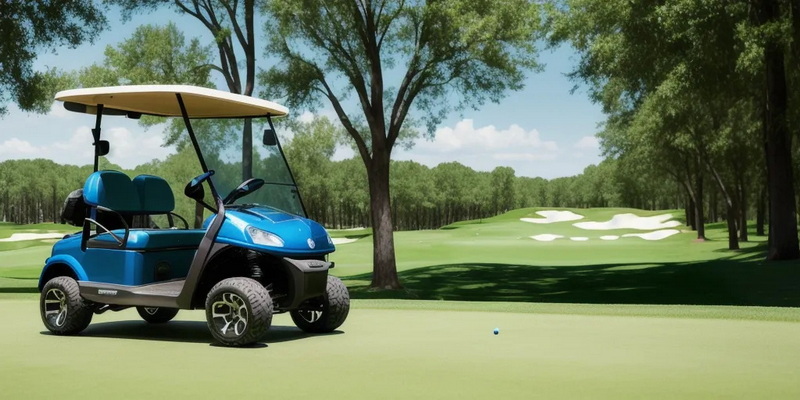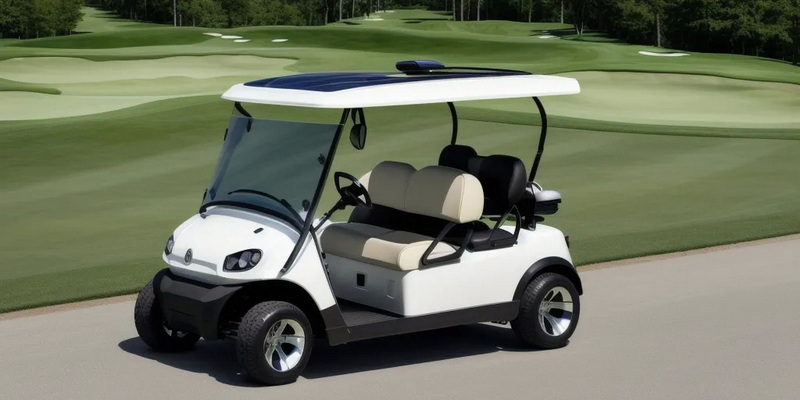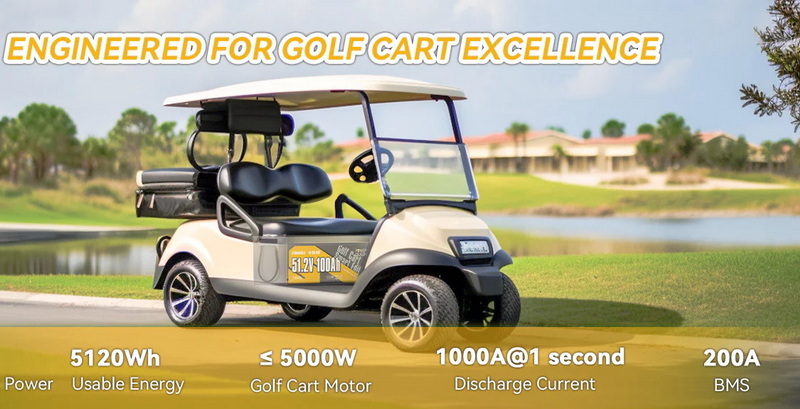Content Menu
● Understanding Electric Golf Cart Speeds
● Factors Affecting Electric Golf Cart Speed
>> Battery Voltage
>> Terrain
>> Weight Load
>> Battery Charge Level
● Comparing Electric and Gas Golf Carts
● Speed Regulations and Safety
● Modifying Golf Cart Speed
● The Future of Electric Golf Carts
● Environmental Impact
● Choosing the Right Electric Golf Cart
● Maintenance and Care
● Conclusion
● FAQ
>> 1. How does the speed of an electric golf cart compare to a regular car?
>> 2. Can I legally drive my electric golf cart on public roads?
>> 3. How far can an electric golf cart go on a single charge?
>> 4. Are faster golf carts more expensive?
>> 5. How can I increase the speed of my electric golf cart safely?
Electric golf carts have become increasingly popular in recent years, not only on golf courses but also in various other settings such as retirement communities, college campuses, and even some urban areas. One of the most common questions people have about these vehicles is their speed. In this comprehensive article, we'll explore the average speed of electric golf carts, factors that influence their speed, and much more.

Understanding Electric Golf Cart Speeds
The average speed of an electric golf cart typically ranges between 12 and 15 miles per hour (mph). However, some models can reach speeds of up to 25 mph, particularly those classified as Low-Speed Vehicles (LSVs).
It's important to note that while these speeds may seem low compared to regular automobiles, they are perfectly suitable for the intended use of golf carts. On a golf course, excessive speed could be dangerous and disruptive to players.
Factors Affecting Electric Golf Cart Speed
Several factors can influence the speed of an electric golf cart:
Battery Voltage
Electric golf carts typically come in 36-volt, 48-volt, and 72-volt configurations. While higher voltage doesn't necessarily translate to higher top speed, it does affect other performance aspects:
- 36V carts: Basic models, often found on public golf courses
- 48V carts: Offer faster acceleration and better performance on various terrains
- 72V carts: Provide more horsepower and torque
Terrain
The type of terrain significantly impacts a golf cart's speed:
- Flat, well-groomed golf courses allow for optimal speed
- Uphill drives naturally slow the cart down
- Rough or rocky terrain can reduce speed and potentially damage the cart if driven too fast
Weight Load
The weight of passengers and cargo affects the cart's speed:
- More weight puts additional strain on the motor
- Heavier loads can reduce top speed and acceleration
Battery Charge Level
As the battery charge depletes, you may notice a slight decrease in the cart's speed and overall performance.

Comparing Electric and Gas Golf Carts
When it comes to speed, there isn't a significant difference between electric and gas-powered golf carts. Both types typically have a top speed of 12-14 mph without modifications.
However, there are some key differences:
- Electric carts are quieter and produce zero emissions
- Gas carts may maintain their top speed more consistently, especially over long periods
- Electric carts may slow down slightly as their battery charge depletes
Speed Regulations and Safety
Many golf courses and communities have speed limits for golf carts to ensure safety. These limits are often around 15 mph, which aligns well with the average speed of most electric golf carts.
It's crucial to adhere to these speed limits and practice safe driving habits, especially when using golf carts on public roads or in areas with pedestrians.
Modifying Golf Cart Speed
Some golf cart owners choose to modify their vehicles to increase speed. Common modifications include:
1. Installing a speed chip or applying a speed code
2. Upgrading the motor
3. Using larger wheels
These modifications can potentially increase a golf cart's speed to around 19-23 mph. However, it's important to note that such modifications may void warranties and could be illegal in some areas, especially if the cart is used on public roads.
The Future of Electric Golf Carts
As technology advances, we're seeing improvements in electric golf cart performance. For instance, some courses are upgrading their fleets to newer, more efficient models.
This video showcases new electric golf carts at Leo J. Martin Golf Course, highlighting the shift towards more environmentally friendly options.
Environmental Impact
The speed of electric golf carts may be modest, but their environmental impact is significant. By replacing gas-powered carts with electric ones, golf courses can substantially reduce their carbon footprint:
- Electric carts produce zero direct emissions
- They're much quieter, reducing noise pollution
- Switching to electric can save thousands of gallons of gasoline annually
Choosing the Right Electric Golf Cart
When selecting an electric golf cart, consider the following:
1. Intended use (golf course, community transportation, etc.)
2. Terrain type in your area
3. Required range on a single charge
4. Number of passengers you need to accommodate
5. Budget constraints
Remember, while speed is a factor, it shouldn't be the only consideration when choosing an electric golf cart.
Maintenance and Care
To ensure your electric golf cart maintains its optimal speed and performance:
- Regularly charge the batteries
- Keep tires properly inflated
- Perform routine maintenance checks
- Store the cart in a dry, protected area when not in use
Conclusion
Electric golf carts, with their average speed of 12-15 mph, strike a balance between functionality and safety. While they may not win any speed records, they're perfectly suited for their primary purposes - navigating golf courses and providing convenient short-distance transportation in various settings.
As technology continues to advance, we may see improvements in speed and efficiency, but the focus will likely remain on sustainability and practicality rather than pure speed. Whether you're using an electric golf cart for a round of golf or as an eco-friendly mode of transport around your community, understanding its speed capabilities and limitations is crucial for safe and enjoyable use.

FAQ
1. How does the speed of an electric golf cart compare to a regular car?
Electric golf carts are significantly slower than regular cars. While a standard car can easily exceed 60 mph, most electric golf carts have a top speed of 12-15 mph, with some models reaching up to 25 mph.
2. Can I legally drive my electric golf cart on public roads?
The legality of driving golf carts on public roads varies by location. Many areas allow golf carts on roads with speed limits of 35 mph or less, but the golf cart must be equipped with safety features like lights, turn signals, and seat belts. Always check local regulations before taking your golf cart on public roads.
3. How far can an electric golf cart go on a single charge?
The range of an electric golf cart can vary depending on the model and battery capacity. On average, most electric golf carts can travel between 30 to 40 miles on a single charge. However, factors like terrain, weight load, and driving style can affect this range.
4. Are faster golf carts more expensive?
Generally, golf carts with higher top speeds, especially those classified as Low-Speed Vehicles (LSVs) that can reach 25 mph, tend to be more expensive than standard models. The increased cost is often due to more powerful motors, advanced battery systems, and additional safety features required for higher speeds.
5. How can I increase the speed of my electric golf cart safely?
While it's possible to increase the speed of an electric golf cart through modifications like upgrading the motor or installing a speed chip, it's important to consider safety and legal implications. Any modifications should be done by professionals, and you should check local regulations to ensure the modified cart remains legal for its intended use.



















































